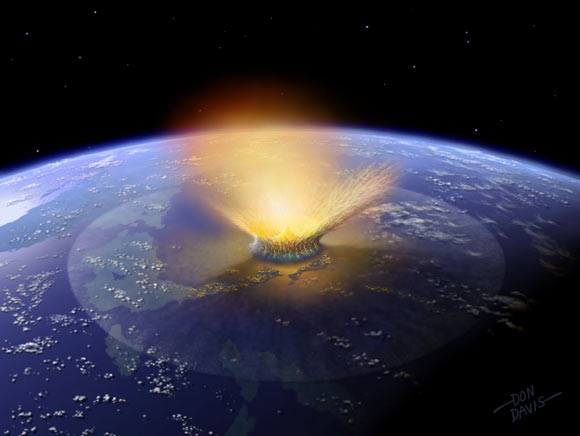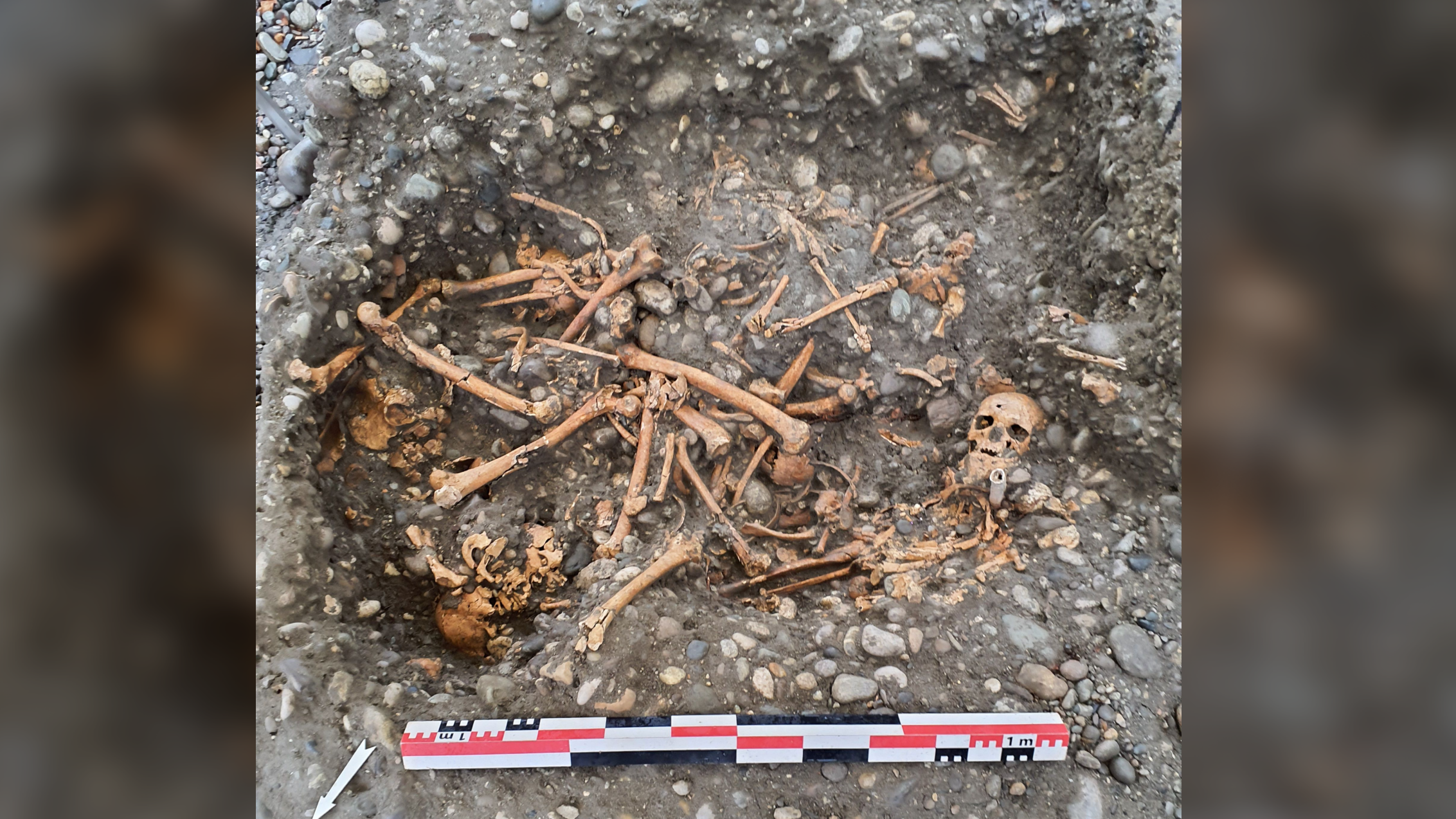Asteroid Impacts Might Wipe Out Alien Life Around Dwarf Stars
What's the recipe for a living planet? A new paper suggests that the right number of impacts is a key ingredient.

What's the recipe for a living planet? Astronomers aren't sure — we haven't found any other than Earth yet.
But we have some educated guesses: Life probably needs water, carbon, and enough light and heat to power a world without burning it to a crisp. The gravity shouldn't be too high, and an atmosphere wouldn't hurt either. But a new study proposes another essential ingredient: major asteroid and comet impacts, in just the right amounts.
When a large object strikes a planet, two things happen: The material from the object gets added to the planet's mass, and some of the atmosphere around the impact zone gets kicked off into space, said Mark Wyatt, a University of Cambridge astronomer and lead author of the new paper. In truly giant impacts, like the one that formed Earth's moon, some atmosphere gets booted off the far side of the planet as well, which means a bit more gets lost. But that doesn't mean a wannabe home world should skip the impacts entirely. If a planet is to develop the conditions thought necessary for life, it's best to belong to a middle category of planets that absorb plenty of major impacts — but not so many that they lose their atmospheres.
Related: 9 Strange, Scientific Excuses for Why Humans Haven't Found Aliens Yet
That's because planets almost certainly need "volatiles" in their atmospheres in order to sprout life, Wyatt told Live Science. Volatiles are chemicals, like water and carbon dioxide, that can boil at low temperatures. All life that we know of relies on water and carbon to sustain itself at a basic chemical level, and scientists believe that the properties of those chemicals make them necessary for life to arise anywhere in the universe.
But not all planets start off with the necessary concentrations of volatiles. Early in a star's lifetime, it's much brighter. And that extra shine is hot enough to bake all the loose dust in the region that will become the star's habitable zone — the not-too-hot, not-too-cold area — later on. Those hot early temperatures likely strip water and other volatiles from the dust that will eventually become habitable planets. So after planets form and the star cools down, these rocky orbs need to acquire their volatiles from somewhere else in the solar system. In other words, they've got to smash into a bunch of big stray objects.
The researchers found that the best candidates for delivering volatiles while not stripping the planet's atmosphere and sterilizing it are medium-size objects. Impacts from 60-foot-wide (20 meters) to 3,300-foot-wide (1 kilometer) asteroids and comets are very efficient at delivering volatiles and will tend to add more to the atmosphere than they subtract, the authors found. Bigger asteroids, between about 1 and 12 miles (2 and 20 km) across, will tend to strip more atmosphere than they add.
Get the world’s most fascinating discoveries delivered straight to your inbox.
Giant impacts like the one that formed Earth's moon, the authors found, don't mess with that story as much as you might expect. Such events are pretty rare, and while they can change the composition of an atmosphere, they won't completely remove it.
One of the important lessons from this paper is that small "M class" stars — the most common category of stars, too dim to see with the naked eye, many of them red dwarfs — are likely bad candidates for life, the authors wrote. That's significant, because a great many potentially habitable exoplanets have turned up around those sorts of stars.
"For M stars, their low luminosity means that the habitable zone is much closer to the star than for a star like the sun," Wyatt said.
To get enough light, an Earth-like planet circling an M-class star might have to be as close to that star as Mercury is to our sun.
And it gets worse. Right up next to a small, low-mass star, asteroids and comets fly around at much higher speeds and crash more dramatically into planets.
"Higher-velocity impacts are much more efficient at stripping an atmosphere," Wyatt said.
That's bad news for life on M worlds. And it's not the only factor that makes M-world life unlikely.
"There are a number of reasons why habitable planets orbiting M dwarfs might not have an atmosphere, including stripping from stellar winds and the planets being much closer in to their host star," said Sarah Rugheimer, an expert in exoplanet atmospheres at the University of Oxford, who was not involved in this research.
So is there any hope for life on M worlds?
"I think, ultimately, we will answer this question observationally with [the James Webb Space Telescope] soon after it launches: Do habitable planets orbiting M dwarfs have atmospheres?" Rugheimer said. "We know that slightly hotter and bigger planets orbiting M dwarfs do have thick atmospheres. But this question still remains for habitable planets: Can they retain a thin enough atmosphere, something like Earth rather than Venus?"
The authors emphasized in the paper that many of their conclusions are based on uncertainties: Where does life form? How much do other star systems out there resemble our solar system?
Edwin Bergin, an expert in planet formation and water at the University of Michigan who was not involved in this research, agreed with the authors that there are what he called "significant complications" in the calculations behind this paper.
"But the general trends they present are quite interesting and could be important," he said.
He pointed to his own work, which has suggested that Earth started out with a thicker, nitrogen-rich atmosphere but lost much of it to impacts. The authors of this new paper suggested in their model that impacts from comets and asteroids might have shaped the atmospheres of Earth, Mars and Venus.
Down the road, the researchers said, there's more to learn about how this work can explain our own solar system, particularly the role of giant impacts here. This paper has not yet been published in a peer-reviewed journal and is available on the preprint server arXiv.
- Fallen Stars: A Gallery of Famous Meteorites
- The 12 Strangest Objects in the Universe
- Top 10 Ways to Destroy Earth
Originally published on Live Science.




